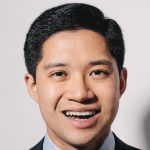 The theme of last week’s (excellent) Clio Cloud Conference, held in New Orleans, was transformation. It made perfect sense in light of Clio’s motto and mission statement: “Transform the practice of law, for good.”
The theme of last week’s (excellent) Clio Cloud Conference, held in New Orleans, was transformation. It made perfect sense in light of Clio’s motto and mission statement: “Transform the practice of law, for good.”
The legal profession is currently undergoing profound transformation, in ways both good and bad. Based on several of the (great) talks I attended at the conference, here are four forces shaping the future of law and legal practice that attorneys should understand to succeed in this rapidly changing environment.
1. The millennial takeover.
Sorry, baby boomers and Gen Xers, but the millennials aren’t going away. To the contrary, as Nicole Abboud of Abboud Media made clear in her dynamic and engaging presentation, the millennials are taking over the world. (Side note: Abboud also produces The Gen Why Lawyer podcast, which I will be appearing on in a future episode.)
Millennials, defined as individuals born between roughly 1980 and 2000, are now the largest generation — 92 million strong in the United States, surpassing the boomers. By 2020, millennials will have total estimated spending power of $1.4 trillion.
So like it or not, lawyers need to get used to millennials, as both clients and colleagues. Here are some tips from Abboud:
(a) Millennials will Google you. So make sure you’re satisfied with your digital footprint and web presence, including social media.
(b) They prize flexibility. As clients, millennials rebel against the rigidity of the billable hour. As colleagues, millennials place lower value on face time, embracing the use of technology to work where and when they please.
(c) They value access and feedback. As clients, millennials like platforms where they can engage in “self-service” and check out what’s going on in their matters at any time. As colleagues, millennials expect regular feedback; annual or biannual reviews won’t cut it.
(d) They want to see the big picture. Have you verbalized your law firm mission? If not, think about doing so. Millennials are a questioning generation, and they want to know the “why” behind everything. You can get great work product from millennials, but you need to make sure that they understand and are invested in your organization’s overall mission.
2. The creation of online communities.
Community has always been critical for lawyers. Community helps lawyers find clients, make cross-referrals, share insights, mentor each other, and thrive in their professional lives.
Lawyer communities are now being built online — and not just through LinkedIn, Facebook, and Twitter. Attorney and author (and former ATL columnist) Keith Lee, in an insightful and humorous presentation, shared the case study of LawyerSlack.
Started about a year ago, LawyerSlack could be described as “Cheers, set at the Mos Eisley Cantina, as scripted by John Grisham.” In other words, as Lee explained, it’s a bar where everyone knows your name, everyone is a nerd, and everything is written by lawyers. In the words of one member, “LawyerSlack is an excellent place to network, brainstorm complex legal issues, and get daily legal news.”
LawyerSlack currently has more than 500 lawyers, who have collectively exchanged more than 735,000 messages (as of the time of the Clio Conference last week). The conversations span some 80 to 100 channels, ranging from #constitutional to #criminal to #first_amendment to #parents to #got (Game of Thrones).
If you might be interested in this “virtual dive bar filled with salty veteran lawyers, fresh-eyed novices, and a lot of rumpled suits,” discussing a wide range of legal and non-legal topics, then check it out here.
3. The explosion of data.
Andy Wilson, CEO and co-founder of Logikcull, is one of the world’s leading experts on data management and discovery (including, but not limited to, eDiscovery). In a fascinating and wide-ranging talk about the evolution of discovery and the shifting eDiscovery landscape, he explained how the explosion of data, in terms of both types and quantity, is something savvy lawyers should see as an opportunity rather than a danger.
Discovery 1.0 was all about hard-copy documents — think of file cabinets full of folders full of papers (for those of you old enough to remember). This period, which lasted for decades, was followed by Discovery 2.0, where paper documents got supplemented by email messages and computer documents (e.g., spreadsheet and word processing docs).
Today we’re living in Discovery 3.0, where we create an estimated 2.5 exabytes of data every day. Data now includes paper documents, electronic documents, emails, text messages, and social-media postings — some of it stored in specific physical locations, and some of it in the cloud.
What does this mean for the litigation process and its different players? Back in Discovery 2.0, Biglaw firms would crush their smaller adversaries, thanks to superior resources. But during Discovery 3.0, Wilson explained, the small firm actually has more power than the big firm.
Why? The Biglaw firms overextended themselves during Discovery 2.0, investing huge amounts of money in complex technology, fancy consultants, and huge internal and external teams. Hoping to recover the costs of their investments, they still feel wedded to the old approaches. In contrast, small firms can take advantage of innovations — cloud computing, predictive coding and artificial intelligence, and platforms like Logikcull — to go toe to toe with the giants, for a fraction of the cost.
Wilson offered an example, a client with 10GB of email that needs to be put through the discovery process. That’s about 30,000 documents.
A small firm would take these documents and upload them to a secure, cloud-based platform like Logikcull. The eDiscovery software culls out 95 percent of the documents as irrelevant or non-responsive, leaving just 1,500 to be reviewed by (human) lawyers. A lawyer can review about 40 documents an hour. Assuming a cost of $250 an hour, the client ends up paying around $9,000 for this review project, or $6 a document.
A Biglaw firm would take a more traditional approach: have all 30,000 documents reviewed individually by an army of associates. At $250 an hour, the same project will cost the client almost $200,000 — and take much longer too. Is it any surprise that clients are increasingly reluctant to use Biglaw firms for eDiscovery ?
For lawyers willing to embrace the latest technologies and innovations, eDiscovery offers great opportunities; for lawyers who resist change, eDiscovery presents great challenges.
What’s a lawyer to do? It’s simple, according to Wilson: “Catch the data discovery wave before it catches you.”
4. The rise of virtual- and augmented-reality technology.
Virtual and augmented reality: it’s not just for video games. Instead, VR and AR technology has the potential to transform the practice of law, as trial lawyer Mitch Jackson of Jackson & Wilson explained in his exciting and inspiring presentation on how to use these technologies in litigation.
It’s no longer a stretch to imagine judges, jurors, lawyers, and witnesses participating in a trial through virtual reality. The technology has reached a point where a juror can feel that she’s right there in the courtroom listening to the witness, even if the witness is actually hundreds or even thousands of miles a way. Jurors can then deliberate with each other, just as if they’re in the same room, even if they too are all over the country.
If this sounds too sci-fi for you, think in more modest terms: how can current, easily accessible technology be used in litigation? If jurors want to see the scene of an accident or a crime, imagine a drone being used to shoot real-time, 360-degree video of the location. Jurors can ask the drone to go up or down, left or right, showing them exactly what they want to see at the scene. This can be easily done using a drone and small camera that can be acquired at modest cost.
Yes, information obtained through sensory technology must comply with all the standard rules of evidence. But this is nothing new; evidentiary rules have come to accommodate technology in all sorts of ways over the years, ranging from the use of videotaped depositions to the introduction of DNA evidence.
There’s no sense in fighting or trying to hide from the inevitable; instead, attorneys should embrace the future. The rise of millennials, online communities, eDiscovery and the cloud, virtual and augmented reality: all these trends can be harnessed by lawyers to survive and even thrive in changing times.
Earlier:
- Clio Unveils Major Overhaul Of Its Platform And New Focus On Moving Practice To The Cloud
- Less Than 30% Of Lawyers’ Workdays Are Billable (And Other Findings From Clio’s Legal Trends Report)
- Who Knew Workers’ Comp Paid Better Than IP?
- Preet Bharara’s 5 Secrets To Success In The Law
 David Lat is the founder and managing editor of Above the Law and the author of Supreme Ambitions: A Novel. He previously worked as a federal prosecutor in Newark, New Jersey; a litigation associate at Wachtell, Lipton, Rosen & Katz; and a law clerk to Judge Diarmuid F. O’Scannlain of the U.S. Court of Appeals for the Ninth Circuit. You can connect with David on Twitter (@DavidLat), LinkedIn, and Facebook, and you can reach him by email at [email protected].
David Lat is the founder and managing editor of Above the Law and the author of Supreme Ambitions: A Novel. He previously worked as a federal prosecutor in Newark, New Jersey; a litigation associate at Wachtell, Lipton, Rosen & Katz; and a law clerk to Judge Diarmuid F. O’Scannlain of the U.S. Court of Appeals for the Ninth Circuit. You can connect with David on Twitter (@DavidLat), LinkedIn, and Facebook, and you can reach him by email at [email protected].




